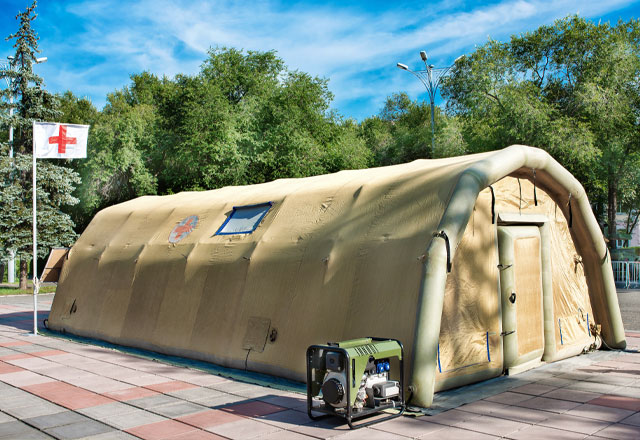The last thing you want to think about after a natural disaster is "will our products hold up to the needs?". In the time right after a natural disaster happens, you do not want to worry about the quality of your products. All you need to worry about is getting to the site and helping however you can! Miller Weldmaster's advancement of technology with machines that utilize hot air and hot wedge has emerged as an effective means of producing disaster relief products such as tents, tarps, and other shelter materials.
What is Thermoplastic Welding?
Thermoplastic welding is a process used to join two pieces of thermoplastic material together by melting them and allowing them to fuse into a single piece. This is achieved by heating the thermoplastic materials until they reach their melting point and then pressing them together. There are several techniques used in thermoplastic welding, including hot gas welding, infrared welding, ultrasonic welding, and vibration welding. Each technique has its advantages and is suitable for different types of thermoplastic materials. Thermoplastic welding is commonly used in industries such as tents, inflatables, construction, and packaging, where the high-quality and durable joining of thermoplastic materials is required.
Hot Air Welding
Hot air welding is a process where two pieces of thermoplastic material are heated to their melting point and then joined together through pressure. The heat is generated by a hot air tool, which blows hot air onto the surface of the material. Using heat, speed, and pressure, this process produces a strong and durable seam that is resistant to water, wind, and other environmental factors. One of the leading benefits of Hot Air versus Hot Wedge is flexibility. Since the air is blowing between the material, the operator has more freedom to the shape of the product. Best for items such as inflatable boats, buckets, bags, or other products with unique curves or shapes.
Hot Wedge Welding
Hot wedge welding, on the other hand, is a process that uses a heated wedge-shaped tool to join two pieces of material together. The tool heats the material and then applies pressure to create a strong and durable seam. With the wedge, compared to hot air, touching the material, hot wedge is best for products that require long straight seams. Such as tents, tarps, geomembrane liners, and other products that require a strong and water-resistant seam.
Radio Frequency
Another method of welding, Radio Frequency. RF is the process of emitting high-energy waves to bond two pieces of material together. Similar to Hot Wedge welding, the RF tooling or bar heats the material and then applies pressure to create a strong and durable seam. Following the commonalities of the hot wedge, this process is commonly used to create products such as inflatable boats, swimming pool liners, and other products that require a strong and water-resistant seam. It can also be used to create tarps, tents, and covers with long straight seams.
What are the advantages of Thermoplastic Welding?
Machines that utilize hot air, hot wedge, or RF welding have several advantages over traditional methods of manufacturing disaster relief products. These machines are faster, more efficient, and produce a higher quality product than manual methods. Miller Weldmaster machines are also more consistent, producing products with the same strength and durability every time. This is crucial in disaster relief situations, where time is of the essence and the products need to be reliable. When a disaster strikes, you don't need to worry about your product! If it is made with a Miller Weldmater machine, you can rely on its strength and quality.
Conclusion
Overall, machines that utilize hot air and hot wedge welding have revolutionized the way disaster relief products are produced. These machines are faster, more efficient, and produce a higher quality product than traditional methods. They are also more environmentally friendly, making them a sustainable solution for disaster relief efforts. With the continued advancement of technology, it is likely that these machines will play an even greater role in disaster relief efforts in the future.
If you are looking for more information regarding the Miller Weldmaster technologies, reach out to our team of experts today! Ready more about Miller Weldmaster's Natural Disaster solutions at www.weldmaster.com/natural-disaster




.png)